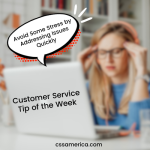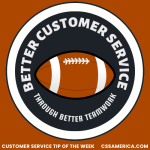
We’ve written several TOWs over the years on Client Relationship Development, Touch Point Planning, and Retention & Growth strategies, and all – in some way, shape, or form – address Retention Drivers. We’ve offered many examples of Retention Drivers for particular industries like Sports, but let’s discuss how you determine the specific Retention Drivers for your business.
Why do customers stay with your company…and why would they leave?
Here are several questions to consider in order to uncover your customers’ unique retention drivers:
- Why did they buy from your business in the first place, and is that part of the reason why they would buy again?
- What aspects of their experience in working with your business have a significant impact on their decision to buy again?
- What is it about the brand or reputation of your company that resonates most with them – and makes them want to be affiliated with you as a customer?
- How much do they value having strong customer service and account relationships with your organization and your people?
- How do they define “value,” and how important is value in their decision to return?
- What is the most important factor in determining their willingness to return, and how do they perceive that your organization performs in that factor versus competitors?
Note that most of these questions focus on what’s MOST IMPORTANT to them and what actually drives decision-making. Keep in mind that many people will say that Price or Convenience or Customer Service or Speed of Delivery is important to them, but what actually causes them to choose Company A v. B?
Also note that these questions force us not to make assumptions. For example, don’t assume that the reason they bought first is why they continue to buy. Don’t assume that how you define your company’s competitive advantage matches how your customer perceives your business v. competitors.
Ask yourselves these questions (better yet, ask your customers), and learn their unique Retention Drivers.
Signup for FREE Tips! Contact Us More Resources for You Visit Our Home Page























